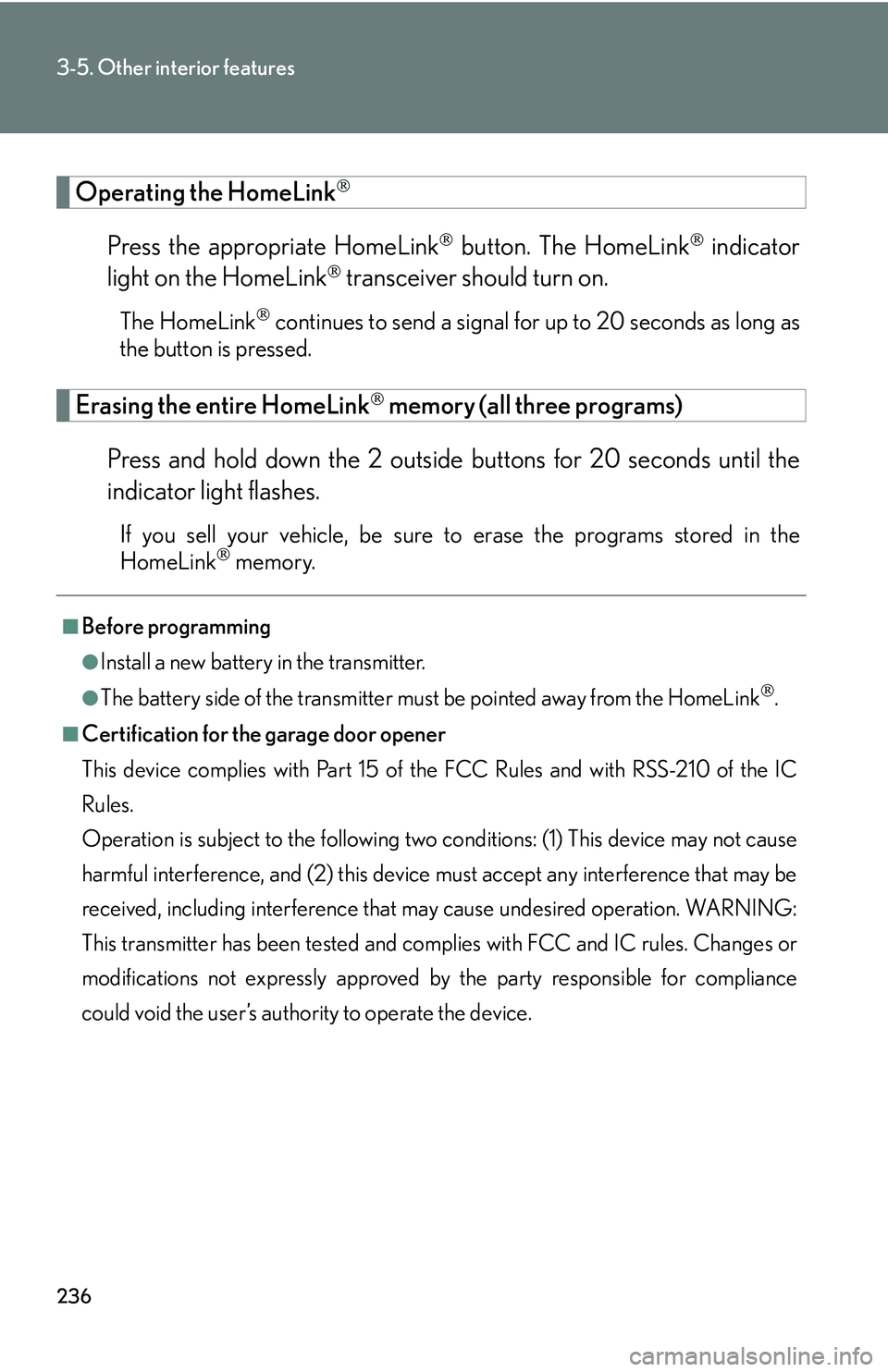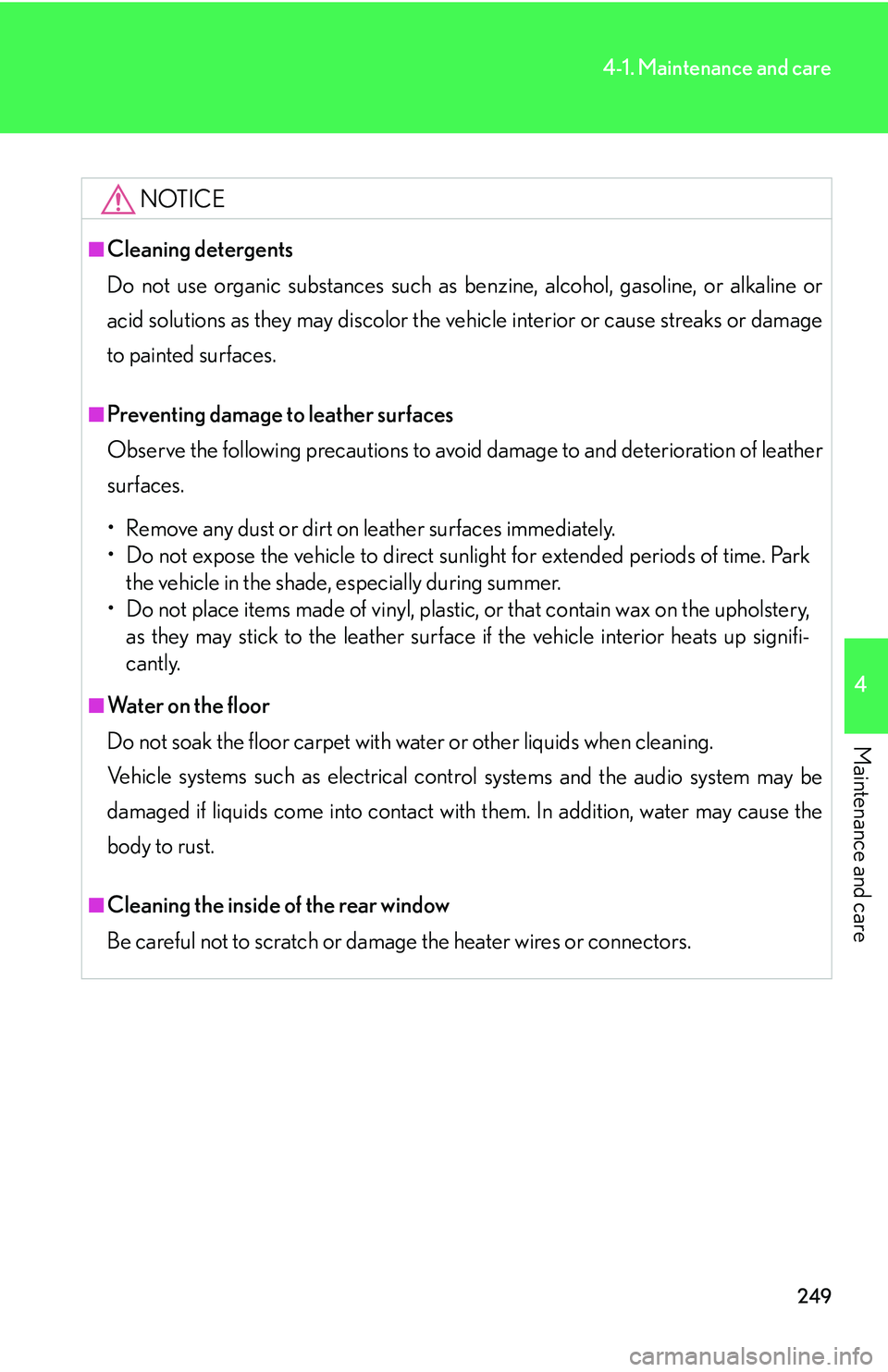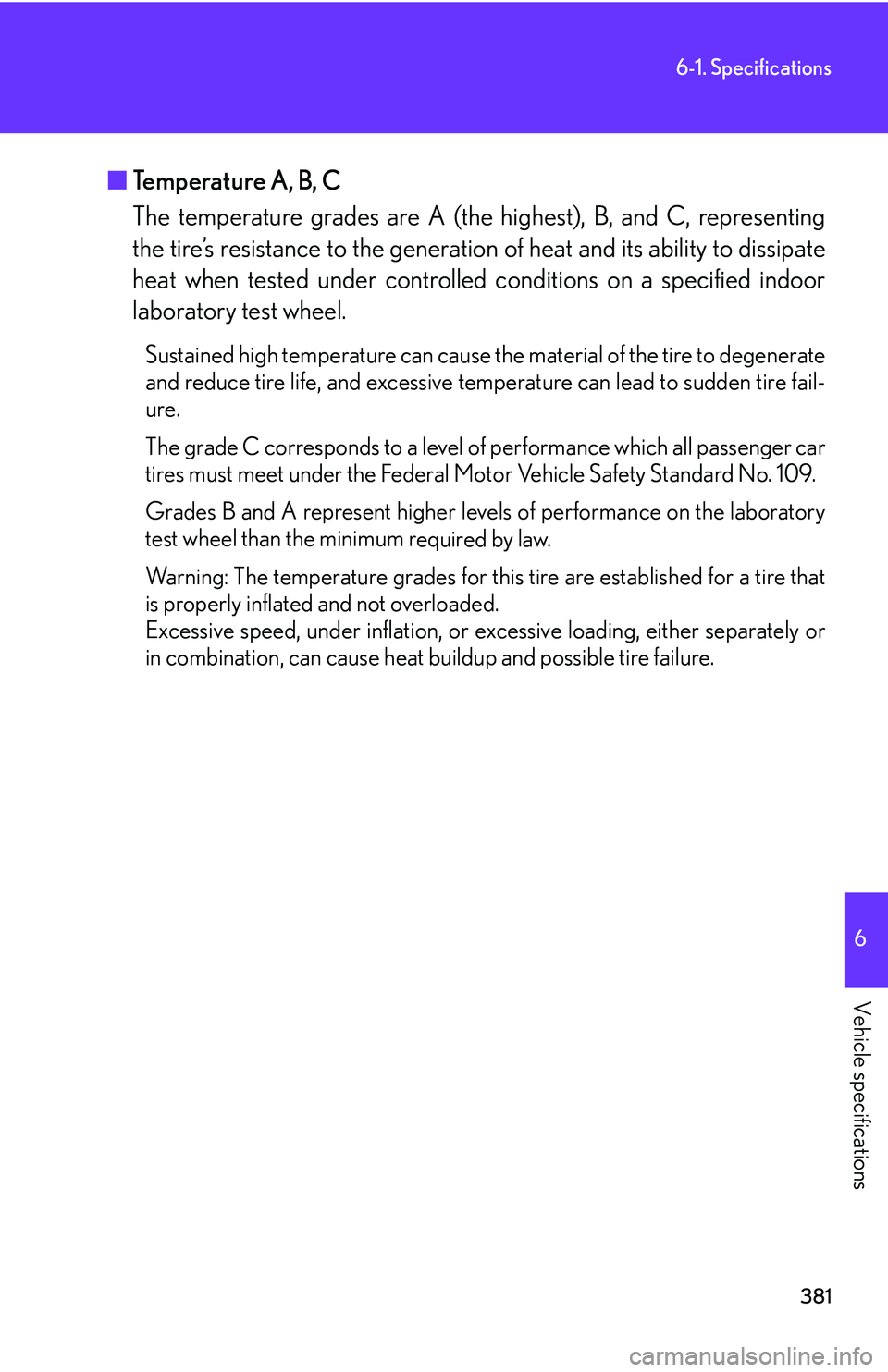Page 190 of 419
174
3-2. Using the audio system
Audio system
*If equipped
Ti t l ePa g e
Operating the radioP. 1 76
Receiving XM satellite radio*P. 1 7 9
Operating the cassette playerP. 1 8 2
Using the CD changerP. 1 8 5
Optimal use of the audio systemP. 1 9 1
Using the rear controllerP. 1 9 3
Using the steering switchesP. 1 9 5
Audio system with built-in CD changer, cassette player, and AM/FM radio
and XM Satellite radio (if equipped)
Page 252 of 419

236
3-5. Other interior features
Operating the HomeLink
Press the appropriate HomeLink button. The HomeLink indicator
light on the HomeLink
transceiver should turn on.
The HomeLink continues to send a signal for up to 20 seconds as long as
the button is pressed.
Erasing the entire HomeLink memory (all three programs)
Press and hold down the 2 outside buttons for 20 seconds until the
indicator light flashes.
If you sell your vehicle, be sure to erase the programs stored in the
HomeLink memory.
■Before programming
●Install a new battery in the transmitter.
●The battery side of the transmitter must be pointed away from the HomeLink.
■Certification for the garage door opener
This device complies with Part 15 of the F
CC Rules and with RSS-210 of the IC
Rules.
Operation is subject to the following two co
nditions: (1) This device may not cause
harmful interference, and (2) this device must accept any interference that may be
received, including interference that may cause undesired operation. WARNING:
This transmitter has been tested and comp lies with FCC and IC rules. Changes or
modifications not expressly approved by the party responsible for compliance
could void the user’s authority to operate the device.
Page 265 of 419

249
4-1. Maintenance and care
4
Maintenance and care
NOTICE
■Cleaning detergents
Do not use organic substances such as benzine, alcohol, gasoline, or alkaline or
ac
id solutions as they may discolor the ve hicle interior or cause streaks or damage
to painted surfaces.
■Preventing damage to leather surfaces
Observe the following precautions to avoid d
amage to and deterioration of leather
surfaces.
• Remove any dust or dirt on leather surfaces immediately.
• Do not expose the vehicle to direct sunlight for extended periods of time. Park th
e vehicle in the shade, especially during summer.
• Do not place items made of vinyl, plastic, or that contain wax on the upholstery, as the
y may stick to the leather surface if the vehicle interior heats up signifi -
cantly.
■Water on the floor
Do not soak the floor carpet with wa ter
or other liquids when cleaning.
Vehicle systems such as electrical cont r
ol systems and the audio system may be
damaged if liquids come into contact with them. In addition, water may cause the
body to rust.
■Cleaning the inside of the rear window
Be careful not to scratch or damage the heater wires or connectors.
Page 397 of 419

381
6-1. Specifications
6
Vehicle specifications
■Temperature A, B, C
The temperature grades are A (the hi ghest), B
, and C, representing
the tire’s resistance to the generation of heat and its ability to dissipate
heat when tested under controlled conditions on a specified indoor
laboratory test wheel.
Sustained high temperature can cause the material of the tire to degenerate
and reduce tire life, and excessive temperature can lead to sudden tire fail -
ure.
The grade C corresponds to a level of performance which all passenger car
tir
es must meet under the Federal Moto r Vehicle Safety Standard No. 109.
Grades B and A represent higher levels of performance on the laboratory
test wheel than the minimum r
equired by law.
Warning: The temperature grades for this tire are established for a tire that
is pr
operly inflated and not overloaded.
Excessive speed, under inflation, or ex ces
sive loading, either separately or
in combination, can cause heat buildup and possible tire failure.
Page 416 of 419
400
What to do if...
What to do if...
A tire puncturesP. 3 4 7If you have a flat tire
The engine does not start
P. 3 5 3If the engine will not start
P. 5 4Engine immobilizer system
P. 3 5 6If the vehicle has a discharged battery
The transmission selector lever
cannot be moved outP. 3 5 4If the transmission selector lever cannot
be shifted from P
The engine coolant temperature
gauge enters the red zone
Steam can be seen coming
from under the hood
P. 3 5 9If your vehicle overheats
You lose your keyP. 3 5 5If you lose your keys
The battery is dischargedP. 3 5 6If the vehicle has a discharged
battery
The doors cannot be lockedP. 1 5Doors
The horn begins to soundP. 5 5Alarm
The vehicle is stuck in mud
or sandP. 3 6 1If the vehicle becomes stuck